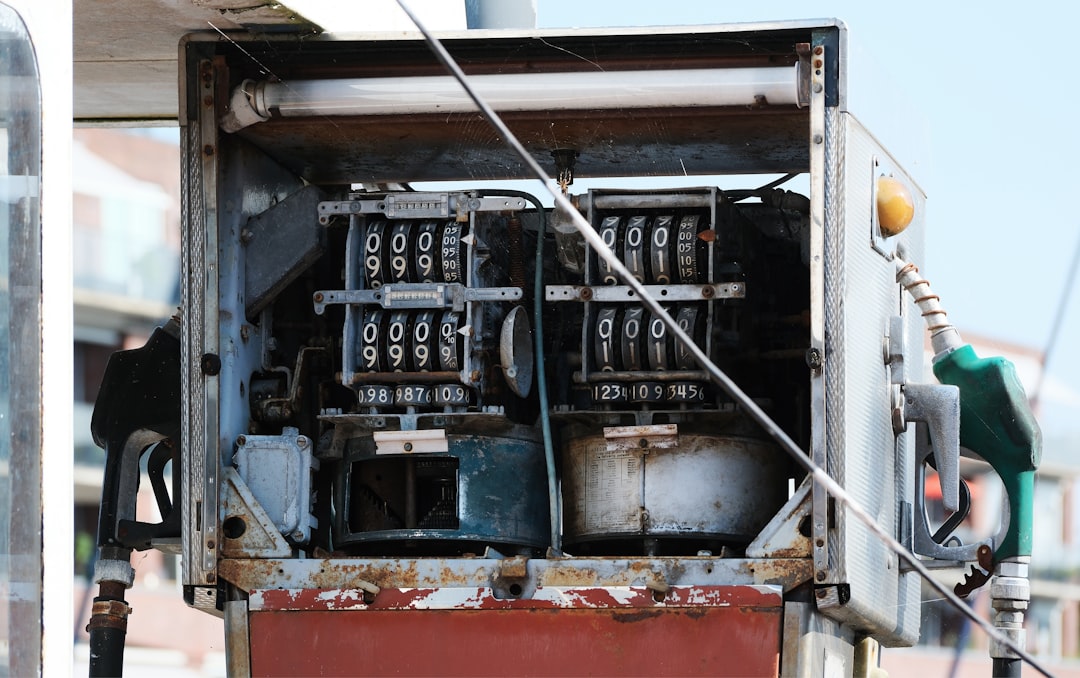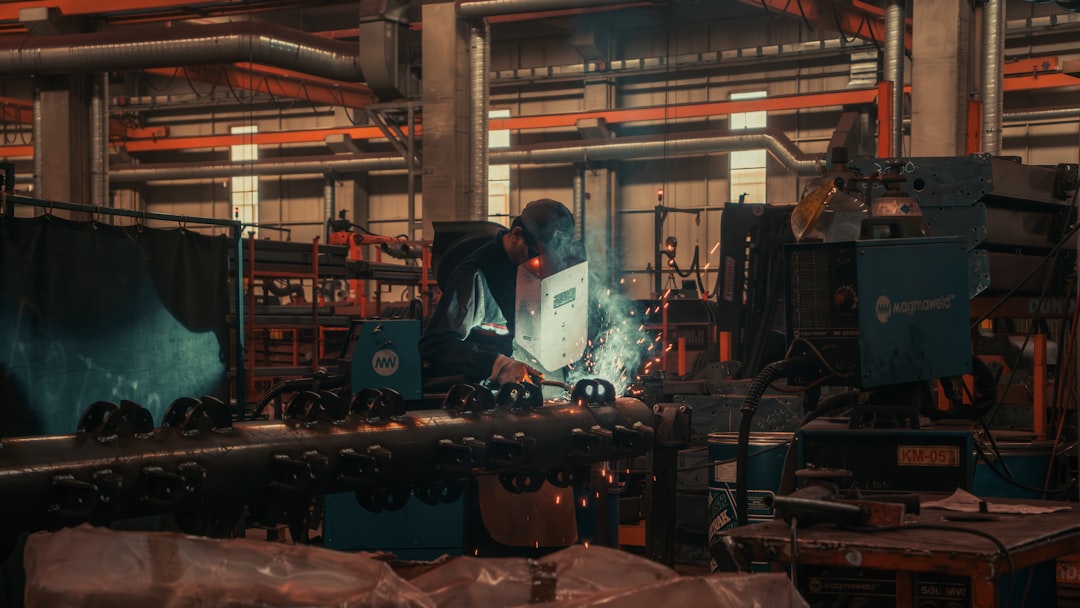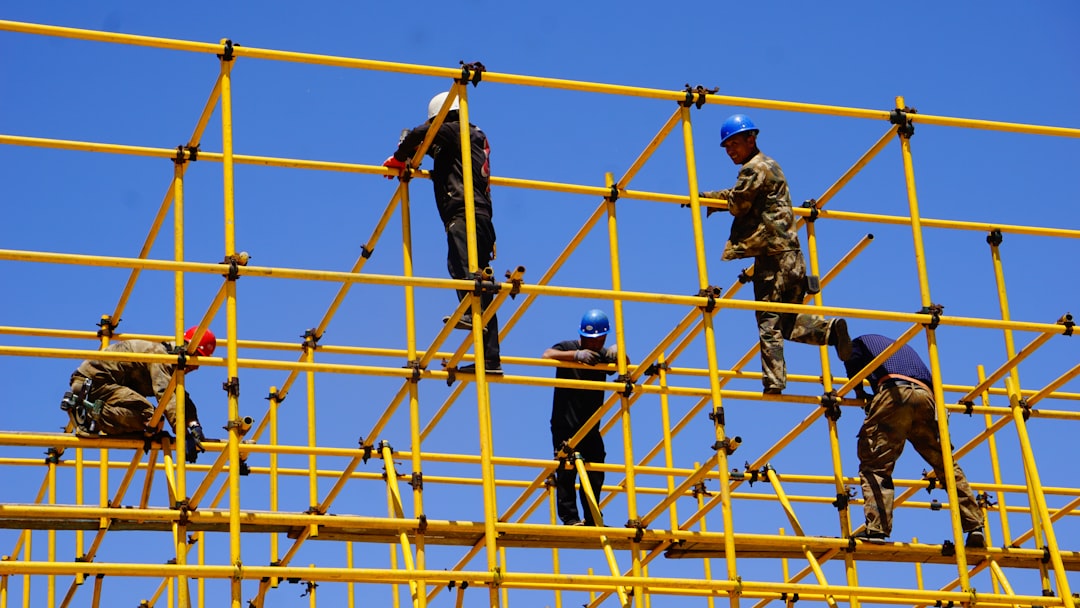

Engage prospects with a scan and streamline customer engagement with FREE QR code marketing tools by Sona – no strings attached!
Create a Free QR CodeFree consultation

No commitment

Engage prospects with a scan and streamline customer engagement with FREE QR code marketing tools by Sona – no strings attached!
Create a Free QR CodeFree consultation

No commitment
Mechanical contractors today navigate a market shaped by high client expectations, digital disruption, and operational complexity. Many firms still depend on analog processes for job site management, asset tracking, and customer engagement, creating gaps in efficiency, accountability, and visibility. Missing high-value opportunities and lacking actionable insights into service delivery can result in lost revenue and diminished customer satisfaction.
QR codes in marketing have emerged as a practical, scalable method to close these operational and informational gaps. In the context of mechanical contracting, QR codes enable instant mobile access to digital manuals, compliance checklists, job documentation, and appointment scheduling without the need to download apps or manually enter information. Each scan is both a convenience and a valuable data point, making it possible to track engagement and surface high-value prospects, supporting targeted follow-up.
By embedding QR codes throughout job sites, assets, and marketing materials, mechanical contractors can achieve real-time workflow visibility, streamline maintenance tracking, reduce missed engagement signals, and connect offline activities to measurable digital outcomes. This drive toward connectivity enables stronger safety compliance, smarter retargeting, and sustainable business growth.

For many mechanical contractors, valuable equipment data and customer requests slip through the cracks because information remains siloed or inaccessible in the field. Paper-based equipment logs, lost service records, and outdated marketing collateral create bottlenecks that affect both job quality and client satisfaction. QR codes remove friction by making physical touchpoints interactive, so anyone on site can access the exact information or action they need in seconds.
The practical opportunities span the entire operation. Field techs can scan a code to pull up as-built drawings, while safety managers can open job hazard analyses and incident forms instantly. Prospects who see your trucks after hours can schedule a service visit from their phone in under a minute. When every scan is tracked, leadership gains visibility into what is being accessed, where, and by whom, which supports better resource planning and faster issue resolution with scan analytics.
Digital solutions can automate QR code creation, destination management, and CRM integration to bring speed and visibility to every point of contact. Tools that support dynamic QR codes and advanced routing, like Sona QR, help you update content on the fly, unify analytics, and tie scan events to pipeline and revenue in your CRM.
Many mechanical contractors struggle to identify and engage high-intent prospects, especially those who interact anonymously with job sites and marketing assets. Analog documentation often means vital engagement signals never make it into CRMs or follow-up workflows, leading to lost opportunities. QR codes turn those dead ends into measurable moments by capturing who engaged, when, and with what content or call to action. For contractor-focused best practices, consider these possibilities.
Beyond lead capture, QR codes bring speed and accountability to daily operations. Field teams no longer waste time searching for the latest drawings or manuals, and safety documents remain current because the destination is updated digitally. With dynamic QR codes, contractors maintain consistent signage and labels while swapping destinations as equipment is replaced, compliance requirements change, or marketing campaigns evolve.
Modern contractors increasingly use QR code-driven analytics and workflow integration to ensure every engagement is captured and acted upon in real time. With tools like Sona QR, data flows directly into systems such as HubSpot or Salesforce where it can trigger workflows, create tasks, and assist your sales and service teams.

Different roles and site conditions require flexible QR implementations. Choosing the right format ensures scanners get the fastest path to value while you collect the data you need for visibility and continuous improvement.
Simple web links can route to manuals, closeout packages, or job dashboards. Forms can capture maintenance requests, punch list items, and incident reports. vCards are useful for project stakeholders who need to share contact info quickly, and Wi-Fi QR codes simplify secure access for inspectors or vendor partners. When onboarding field apps or asset platforms, app download QR codes streamline adoption across diverse device types.
Dynamic platforms keep QR content current and monitor performance, ensuring codes do not become outdated or ineffective. Static QR codes are appropriate for unchanging destinations such as a public product page, while dynamic QR codes are better for trackability, updates, and campaign optimization.

Growth often stalls when valuable engagement from job sites, print materials, or vehicles is not captured or made actionable. Mechanical contractors can weave QR codes into the most visible, repeatable touchpoints to convert interest into measurable outcomes and to turn daily operations into data that improves decisions.
Think about the surfaces and moments your audiences already encounter. Equipment they touch, signage they walk past, invoices they pay, and trucks they notice at night are all opportunities. With distinct QR codes for each channel or placement, you can attribute performance accurately and double down on what works.
Deploying QR codes this way surfaces new leads, supports segmented follow-up, and streamlines workflows that were previously manual and error prone. Use UTM parameters on all destinations to attribute scans by channel, placement, and creative. See additional QR ideas for contractors.

QR codes aligned with specific processes help resolve documentation loss, missed safety steps, and difficult onboarding. The most effective use cases mirror real-world interactions where a scan feels natural and immediately useful to the person on site or the customer deciding to book service.
Below are three practical scenarios that mechanical contractors implement quickly and scale across regions or divisions. Each one turns a paper-heavy, slow step into a fast, trackable workflow that benefits both the field and the office.
These usage scenarios help contractors transition from reactive to proactive, measurable engagement. They also build a foundation for retargeting and lifecycle marketing because each scan is tied to a context, a person, or an asset.
Retargeting often fails due to lack of data from anonymous, high-fit prospects such as building owners, facility managers, and general contractors who interact with your offline presence. QR code campaigns make these interactions visible, allowing you to segment audiences by intent and context, then tailor follow-up through sales alerts, email drips, or paid media. For step-by-step tactics, see intent-driven retargeting.
For mechanical contractors, useful audience distinctions include customers with existing maintenance contracts versus one-time service requesters, emergency service scanners versus planned maintenance interest, and specifiers or GCs scanning at a trade show versus occupants scanning in a building. Each distinction helps you personalize messaging and prioritize outreach.
By treating each QR scan as a high-fidelity signal, you replace assumptions with real behavior. This supports lead scoring, sales prioritization, and tailored content that moves prospects from interest to commitment.
Disconnected data and untracked print assets reduce marketing impact. QR codes bridge offline and online channels, so you can see which materials and placements drive engagement, then invest accordingly. They also give prospects a low-friction way to take the next step when interest is highest.
Because mechanical contracting depends on both local presence and B2B relationships, consider where your brand shows up in the physical world. Align QR placement with buyer intent at that moment, and use dynamic destinations to route scanners to personalized content by market or vertical.
QR codes serve as the offline onramp to your digital marketing engine. With a centralized platform like Sona QR, you can manage all your codes, monitor performance by channel and placement, and sync scan activity with your CRM and ad platforms for a complete view of impact. For HVAC-specific inspiration, explore HVAC marketing.
Mechanical contractors do best with QR campaigns that tie directly to a measurable business outcome such as faster service scheduling, higher safety compliance, or increased maintenance plan renewals. Use this checklist to plan, deploy, and improve your program with confidence across job sites and marketing channels.
Start small with one or two high-impact use cases, then scale successful patterns across divisions and regions. Assign ownership for each step so both office and field teams know how QR fits into their daily workflows.
Pick one priority problem to solve and define the business outcome you want. Typical examples include increasing scan-to-schedule bookings from vehicle wraps, reducing time to retrieve equipment documentation on site, or improving daily safety check-in compliance rates.
Choose static or dynamic QR codes depending on whether you need editing, analytics, and routing. For operations and marketing campaigns, dynamic QR is recommended because destinations change and you will want performance data.
Design QR codes with clarity and context. Create a strong visual container, add a benefit-driven call to action, and ensure codes are sized and placed for real-world conditions like dirty surfaces, glare, and distance.
Roll out codes on the physical surfaces and materials your audiences encounter most. Use unique codes by channel and placement to enable full transparency and comparative analysis.
Use a QR platform to monitor performance and connect scans to conversions. Combine analytics with field feedback to improve placements, messages, and destinations.
Modern QR platforms like Sona QR automate key steps such as code generation, destination updates, and CRM sync. Start creating QR codes for free.
Contractors often lack visibility into engagement from offline sources such as brochures, trucks, and job sites. QR codes close that gap by capturing every scan along with context that shows where demand originates and how it converts. The result is better prioritization, smarter marketing, and faster service. Learn more about offline attribution.
Why it matters is simple. Knowing a code was scanned is useful, but the real value comes from tying that scan to downstream actions such as a form fill, a calendar booking, or a signed service agreement. Traditional tools stop at the scan. Platforms like Sona QR and Sona.com extend the view from first scan to revenue with identity resolution, CRM enrichment, and multi-touch attribution. For identity resolution, see account identification strategies in this guide.
With advanced analytics in place, QR tracking becomes vital to predictive revenue planning. You will know which placements generate appointments, which drive renewals, and which collateral accelerates deals.
Sustained success comes from standardizing QR usage across teams, training field personnel, and automating follow-up. The goal is to make scanning and responding second nature so every touchpoint is an opportunity to capture demand, serve customers, and reduce friction.
Focus on the placements you use most and the outcomes that impact your business. Align tips to your common media such as vehicles, asset labels, invoices, and proposal packets, then reinforce with processes and incentives.
You can generate and track your first QR codes for free with Sona QR. Only a few minutes of setup can replace slow manual steps with fast, measurable interactions. See additional contractor-focused tips in this overview.

Mechanical contractors report strong results from QR code usage because the technology aligns with real field constraints and buyer behavior. When teams can find documents in seconds and customers can schedule with one scan, friction disappears and performance improves.
Consider these examples that reflect common scenarios across HVAC, plumbing, and sheet metal:
These gains stem from tracking and acting on engagement signals that used to go unnoticed. By reviewing scan analytics weekly and iterating placements and CTAs, contractors can compound improvements over time.
QR codes succeed when they are easy to see, easy to scan, and deliver immediate value. They fail when they are too small, poorly contrasted, or route to irrelevant or outdated destinations. Mechanical contractors can avoid the common pitfalls with a few practical habits.
As you scale, institute a governance checklist to retire outdated codes, standardize design elements, and review analytics at set intervals. Encourage teams by demonstrating how QR usage protects against errors, reduces callbacks, and speeds up their day.
Mechanical contractors who embed QR codes into core workflows achieve measurable gains in marketing performance, operational discipline, and client satisfaction. Each scan reduces manual errors, supports smarter segmentation, and creates a path toward data-driven account management. By making QR codes a foundational tool for digital transformation, contractors can turn every job site, asset, and point of contact into an opportunity for growth.
QR codes have revolutionized the mechanical contracting industry by transforming traditional access management and equipment tracking into seamless, interactive experiences. Whether it’s streamlining job site access, enhancing equipment maintenance tracking, or providing instant service documentation, QR codes replace cumbersome paperwork with efficient, mobile-friendly solutions that deliver real-time insights and operational control.
Imagine effortlessly monitoring which assets have been serviced, granting secure access to authorized personnel instantly, and dramatically reducing downtime—all while capturing data that drives smarter decisions and improves project outcomes. With Sona QR, you can create dynamic, trackable QR codes in seconds, update access permissions or service information instantly without reprinting, and link every scan directly to your operational metrics. No missed updates, no lost data—just smarter workflows and increased productivity.
Start for free with Sona QR today and unlock the full potential of QR codes to streamline your mechanical contracting operations, improve access control, and drive measurable business growth.
Mechanical contractors can use QR codes to provide instant mobile access to digital manuals, compliance checklists, job documentation, and appointment scheduling, enabling real-time workflow visibility, streamlined maintenance tracking, and faster issue resolution.
QR codes improve efficiency, accountability, and visibility by reducing manual errors, eliminating paperwork, enhancing safety compliance, enabling real-time engagement tracking, and supporting targeted marketing and customer follow-up.
QR codes allow customers and prospects to quickly access scheduling forms, service requests, and review portals without apps, while enabling contractors to capture actionable engagement data for personalized follow-up and retargeting.
Practical uses include digital equipment registers, safety compliance signage, scan-to-schedule service workflows, enhanced print collateral, and service vehicle codes that facilitate after-hours requests and customer onboarding.
Contractors can label equipment with QR codes linking to digital registers containing service history, manuals, photos, and notes, which reduces errors, preserves records across shifts, and enables easy service ticket initiation.
Use Sona QR's trackable codes to improve customer acquisition and engagement today.
Create Your FREE Trackable QR Code in SecondsJoin results-focused teams combining Sona Platform automation with advanced Google Ads strategies to scale lead generation

Connect your existing CRM

Free Account Enrichment

No setup fees
No commitment required

Free consultation

Get a custom Google Ads roadmap for your business






Launch campaigns that generate qualified leads in 30 days or less.
